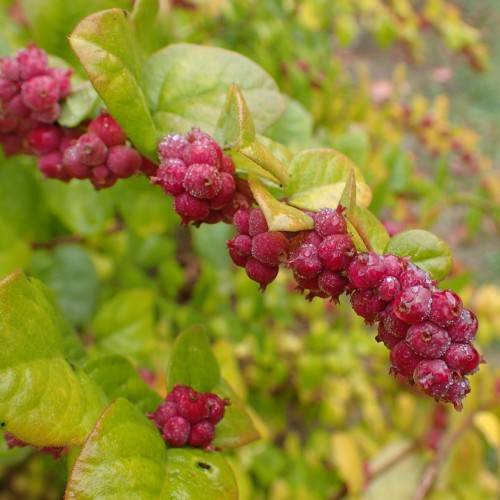
coralberry
Symphoricarpos orbiculatus
Cycle:
Perennial
Watering:
Average
Hardiness Zone:
2 - 7
Flowers:
Flowers
Sun:
Full sun,part shade
Fruits:
Fruits Ready In Fall
Edible:
Yes
Leaf:
Yes
Growth Rate:
Low
Maintenance:
Moderate
Drought Tolerant:
Yes
Salt Tolerant:
Yes
Thorny:
Yes
Invasive:
Yes
Care Level:
Medium
watering
Coralberry (Symphoricarpos orbiculatus) grows best in moist, well-draining soil and in full sun or partial shade. Watering is important for the growth of this plant species. During the first year after planting, coralberry requires consistent moisture for optimal performance. Water once or twice a week, providing enough moisture so that the soil feels evenly moist but not soggy. Once the plant is established, it is more drought tolerant and should be watered only during extended dry periods. In general, coralberry only needs light, supplemental watering once a week during summer, or every 2 weeks during the remainder of the year.
sunlight
Coralberry plants require full sun to partial shade - either at least 4 hours of direct sunlight each day, or bright indirect sunlight throughout the day. This plant is an excellent choice for gardeners who do not have access to full sunlight most of the day. It can tolerate more shade than most plants, but may not flower as abundantly in those conditions. If possible, place your coralberry in full sun during its "budding" or growth season, which is generally around late spring to early summer. Once established, the coralberry will perform best and have the most amount of flowers and berries if it receives 6-8 hours of sunlight each day.
pruning
Coralberry plants should be pruned 2-3 times a year to maintain their desired shape. Prune the plant in early spring before new growth begins. Young, healthy coralberry plants generally need light pruning to remove dead, diseased, or damaged wood on a yearly basis. Established plants that are overgrown should be pruned more severely by cutting back old growth. In the late winter or early spring, prune about 1-half of the oldest branches down to the ground or to younger branches. This will help rejuvenate the plant and control its size. Prune any vigorous or angled shoots to avoid overcrowding. If the coralberry is heavily laden with berries, which can be a weed seed source, consider pruning spent blooms and some of the berries during the summer for manageable maintenance.
